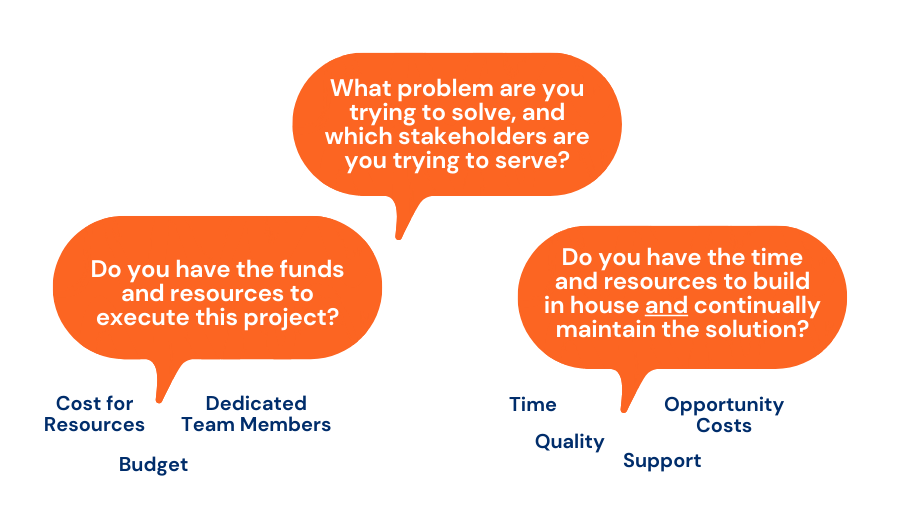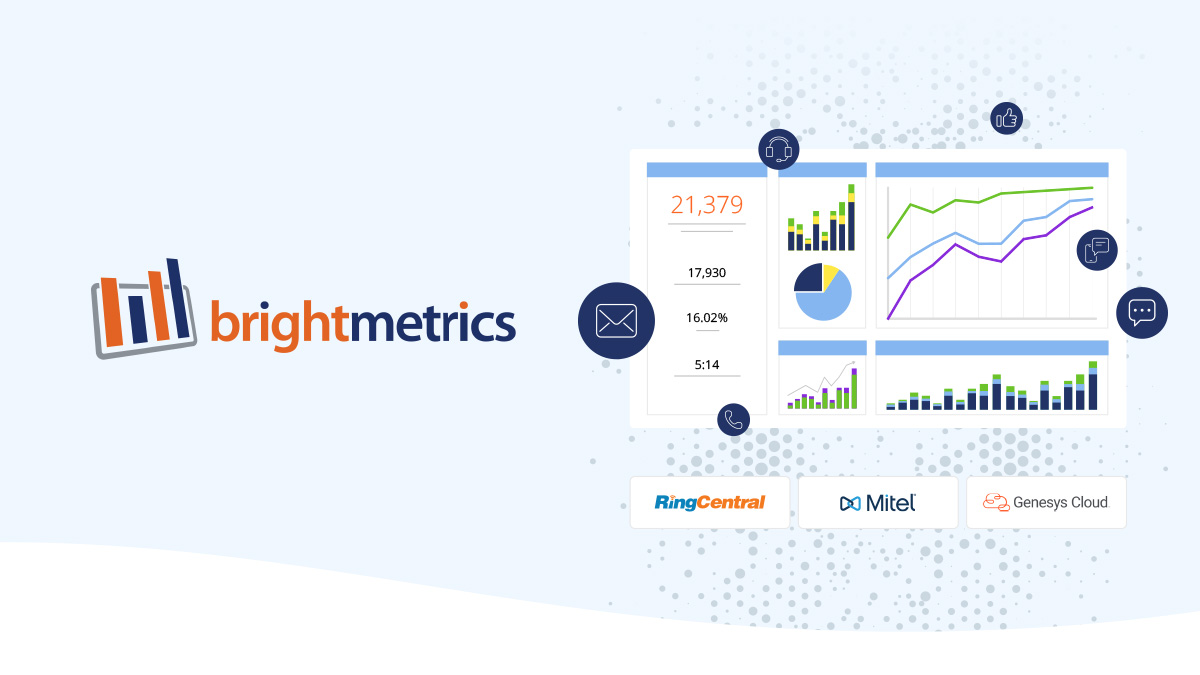Professional sports has become one of the most data-driven industries in the world. If you’re new to this idea, or maybe looking for great stuck-at-home entertainment, watch Moneyball or head over to https://sabr.org/sabermetrics and dive in.
I think we can agree that MLB is spending tens of millions of dollars a year on their people, processes, and platforms for analytics (or at least you can trust me, I’ve confirmed this with a friend involved in their statcasts). Their ultimate goal is to serve up memorable, world-class entertaining customer experiences.
So when it came time to get more insights from their contact center data and the experiences they’re providing for their customers, you’d think organizations with these kinds of data chops would have no problem tapping into that data and building their own analytics solution, right?
I’ll avoid the “called for relief” cliche here, and say that brilliant people in their customer experience organizations brought in Brightmetrics as a third party because they were looking for experts in data for the customer experience domain, that could accelerate their time to valuable insights at the same time as saving them money:
“We were just using the native reporting, which wasn’t giving us the information we were looking for.” – Estee Arend, Cleveland Guardians Fan Services Coordinator
“[Brightmetrics] Easy self-management and self-service, great awareness for staff and customizable, reporting is also useful and easy to run.”– Christine Verbos, Milwaukee Brewers
We don’t have to convince the dedicated operators of the contact center. They know they’ve spent hours, maybe days agonizing at their desks pulling together data from customer interactions, extracting it into Excel, merging, “vlookup”ing, pivoting to get business insights, and pulling it all together into a presentable format to give to leadership.
The native reports and dashboards can’t get you what you need. You’ve started doing your research on contact center analytics solutions, but in parallel, your leadership team thinks maybe you have the resources to “build this in house.” Big Data is nothing new, and a lot of organizations have been building out the BI/Analyst bench depth but, before making a decision, consider the following questions:

It’ll be tempting to suggest that some of the assumptions outlined here are not necessary or inflated. In attempts to reduce costs, some leaders will contend that the contact center teams should leverage the available tools with a little help from IT and the BI team. Let me caution you against buying into this without really thinking through the costs for your team. Please don’t take our word for it either! We’re big fans of Bill Franks, the Chief Analytics Officer at the International Institute for Analytics. He has a great blog to consider on this topic entitled “Why Self Service Analytics Really Isn’t a Thing.”
Here are a few of my favorite quotes, provided with permission:“It isn’t fair to expect IT to have all the answers about what users need. Rather, users of all skill levels and roles need to let IT know what they are looking for so that IT can implement the right tools to enable that functionality.”“Another mistake to avoid is the assumption that once self-service capabilities are implemented, the need for support will drop substantively. The reality is that someone will still need to provide training and ongoing technical support for the self-service environments.”
So let’s walk through the scenario over a three-year horizon, assuming you moved forward to build an in-house solution. We’ll take our example of an operation that supports around 100 agents, but these costs are incredibly conservative and certainly go up with more extensive operations.
Assumptions:
1. At a minimum, you’ll need the skillset and availability of a moderately experienced Business Process Technology Consultant, Data Analyst/Scientist, or Technology Project Manager.
- Mean Avg Cash Compensation Salary and Bonuses ~$120k
- Fully Burdened Per Hour cost $107/hr (figured this with the calculator here)
2. Initial project to leverage your PowerBI, Tableau, other BI tools with user-friendly reports, dashboards, and templates could wildly vary but easily on the low end consume ~160 to 200 hours of dedicated work time from this resource. Project Manager/Lead time would include:
- Requirement gathering, defining, validating the requirements from the contact center ops stakeholders
- Configuring API, data connection, building dashboards, and reports
- Reviewing, refining, and validating w/ contact center ops
- Initial training of contact center team on how to use
Easily Quantifiable Costs:
1. 1st Year Cost = $32k = $20k (initial project cost) + 3x $4k (quarterly maintenance)
- Based on assumptions, initial project rollout would cost close to $20k on the lowest end (*not including additional licensing costs for BI tools if necessary)
- For more complex contact centers, easily cost over twice this
2. Yearly Maintenance Cost = $15k/yr
We’ll assume quarterly reviews and revisions for the contact center team so they can implement changes from new vendor data available and get additional requirements satisfied as operations grow in sophistication. Updates, add-ons, continuous development = ongoing workforce costs, we’ll assume a low 36 hours of quarterly throughput project time to support changes.
- Requirement gathering, defining, validating the requirements from the contact center ops stakeholders
- Updating API calls, data connection, building new dashboards, and reports
- Reviewing, refining and validating w/ contact center ops
- Training updates for members of the contact center team
3. Supporting End Users and Business Stakeholders: $8k/yr
Different workforce assumptions: you’ll need, at minimum, a Junior IT Applications Systems Analyst to work with the contact center operations team for support, queries, and new agent/staff training.
- Lower Avg Salary ~$80k
- Fully Burdened Per Hour Cost $63/hr
- Direct Support: 5-10 requests per month, average 30 min each
- Training and Support: ~ 5 hours/mo
Variable/Unknown: Quality and responsiveness of support to the contact center operations team?
Variable Costs: (only you can answer these, but likely more costly than the above)
1. Opportunity Costs of Committed Resources = Variable
- What other, more strategic, or higher return projects are you missing out on by committing these resources? What projects are delayed or take a backseat to meet the immediate operational need?
- What if you start building, and your analyst/support team gets pulled into an urgent competing project – while your contact center analytics project takes a backseat, what time and resources will you lose, and how does your CX suffer?
2. Time to Value = Variable
- It will take anywhere from several weeks to a quarter to initially rollout your in-house build
- Scope creep – even if initial planning and requirements are done well, the project will continue to grow with more requirements and further delay delivery to the team
Plot Twist
Don’t get stuck in a dualistic “either/or” dilemma if this is a debate in your organization! As Bill Franks mentions, there are different stakeholders with different needs. Brightmetrics serves many customers who deploy our services to provide a very cost-effective, flexible, and intuitive solution for their front-line operations. They also take advantage of our customizable OData and API features to feed the data to the more sophisticated BI teams for more mixed data perspectives, in support of higher-level strategic planning and perspectives.
Brightmetrics is the leading analytics and data visualization service for supporting customer experience professionals using the Mitel and Genesys Cloud platforms. We have over ten years of experience helping teams make better data-driven decisions in contact center operations. We’ve simplified the above into a helpful infographic you can view below to compare getting the insights you need in minutes vs. building internally.




